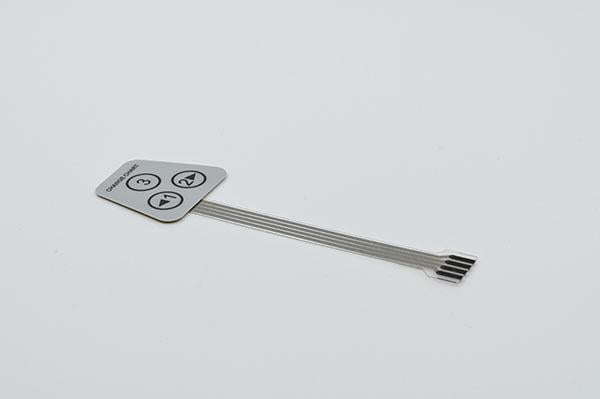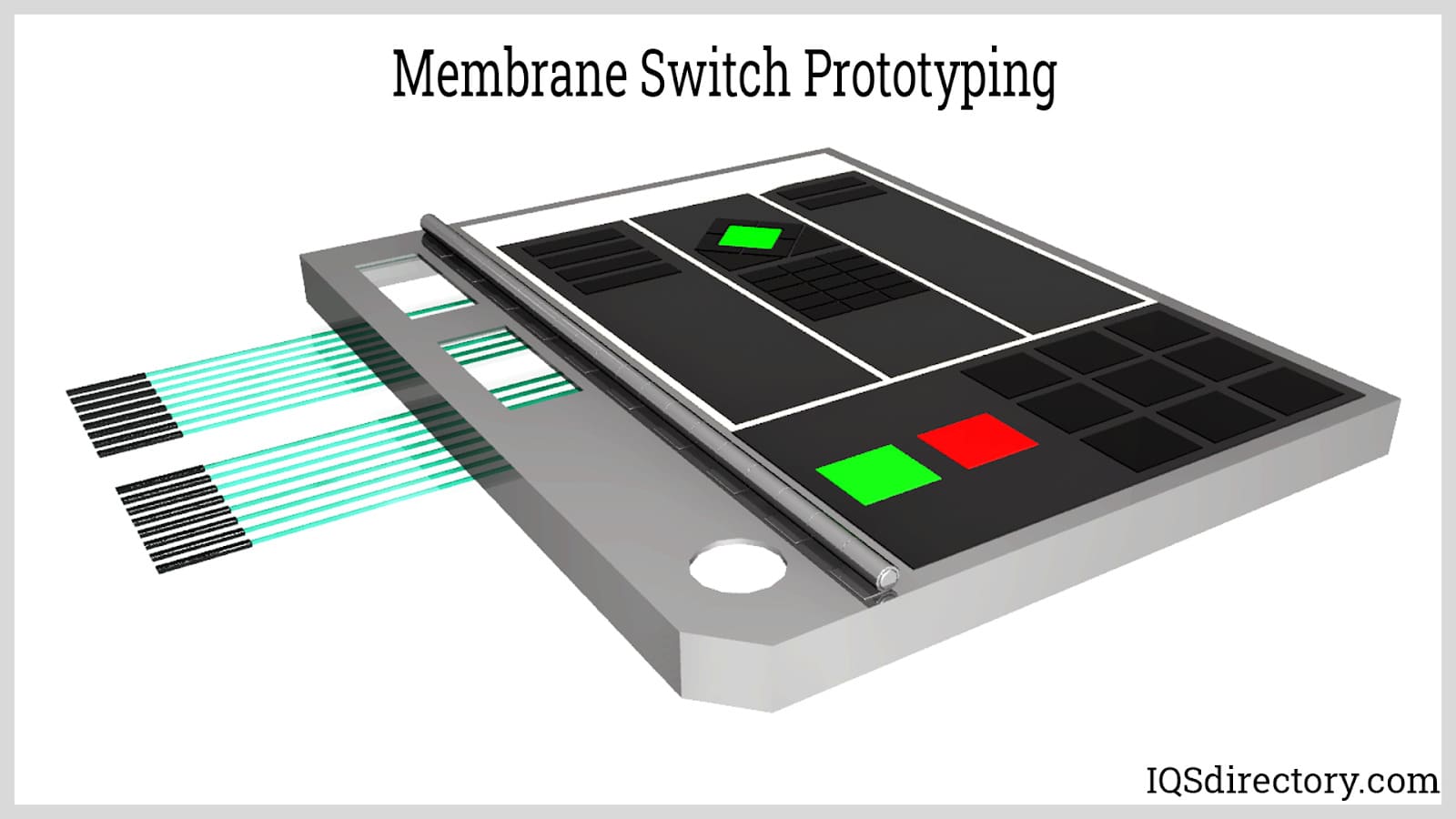All Regarding Membrane Layer Switch: Comprehending Its Style and Functionality
When you consider the control interfaces in contemporary devices, membrane layer buttons usually come to mind. These parts are greater than simply buttons; they blend layout and capability effortlessly. Recognizing how they function and what makes them effective can alter your perspective on day-to-day electronic devices. But, there are subtleties to their style and performance that you might not know. Let's discover what collections membrane switches in addition to various other control systems.
What Are Membrane Switches?

Their smooth nature makes them simple to clean and immune to dirt and dampness, an important attribute in many settings. Membrane layer switches can also be tailored regarding shape, size, and graphics, permitting producers to create one-of-a-kind user interfaces customized to details items. Plus, they're lightweight and slim, which aids in lessening the general bulk of gadgets. Generally, membrane buttons play a considerable role in boosting customer experience across a large range of applications.
How Membrane Layer Switches Job
When you press a key on a membrane layer switch, it activates a simple yet reliable mechanism. The leading layer, frequently made from flexible product, presses down onto a conductive layer under it. This activity bridges the gap between conductive traces, finishing an electric circuit. As quickly as the circuit shuts, it sends a signal to the device's controller, which translates your input.
You'll observe that the responsive comments varies based on the button layout, supplying either a soft click or a more pronounced reaction. When you launch the trick, the membrane layer returns to its original position, reopening the circuit and quiting the signal. This procedure takes place almost instantly, making sure a receptive customer experience.
Membrane switches are popular due to their toughness and resistance to dust and dampness, making them perfect for various applications, from household home appliances to clinical gadgets. Comprehending this procedure aids you appreciate their widespread use.
Secret Elements of Membrane Switches
Understanding the key elements of membrane layer buttons is fundamental for grasping their performance and design. The safety layer guards against environmental variables and use, extending the switch's life-span. By comprehending these elements, you'll obtain understanding into how membrane layer changes operate and their relevance in different applications.
Products Made Use Of in Membrane Switch Over Design
The efficiency and sturdiness of membrane switches over heavily depend upon the materials made use of in their design. You usually experience polyester and polycarbonate as main substratums as a result of their excellent strength and adaptability. These products resist scrapes and chemicals, making them ideal for requiring atmospheres.
The conductive layers commonly make use of silver or carbon, chosen for their reliability and conductivity. membrane switch manufacturer. Silver supplies remarkable efficiency, while carbon is a cost-effective alternative. For the overlay, you could take into consideration a matte or glossy coating, depending upon your aesthetic demands pop over to these guys and customer experience
Make certain to pick adhesives that hold up against ecological variables like temperature and humidity. Selecting the appropriate materials will certainly assure your membrane button stands the test of time.
Design Factors To Consider for Membrane Layer Buttons
While designing membrane buttons, it's crucial to think about various elements that influence their functionality and customer experience. Begin by concentrating on the design and button size; make sure they're instinctive and very easy to navigate. Consider the tactile comments you want to supply-- will customers need an obvious click or a softer touch? In addition, think of the products you'll make use of, as they'll impact resilience and appearances.
Don't ignore the graphic style; clear labeling and shade contrast are considerable for exposure. Validate your style suits environmental elements, like moisture or temperature level variations, which can affect efficiency. Remember the value of screening models with real customers to collect responses and make needed adjustments. This iterative procedure helps you fine-tune the layout, confirming it fulfills both try this functional and visual needs properly. By carefully considering these elements, you'll produce a membrane layer button that enhances functionality and satisfaction.
Applications of Membrane Buttons
Membrane switches are functional elements discovered in different applications, from commercial devices to consumer electronics. You'll see their influence in equipments that call for long lasting user interfaces and in gadgets that take advantage of smooth layouts. Recognizing these applications assists you appreciate the performance and usefulness of membrane buttons in daily modern technology.
Industrial Devices Usage
When you're looking to boost the functionality of commercial equipment, membrane layer buttons supply a reputable service that combines durability with straightforward design. These buttons are excellent for severe atmospheres, supplying resistance to dirt, moisture, and chemicals. Embrace membrane layer buttons to enhance your operations and enhance overall performance.
Customer Electronics Combination
In the domain name of consumer electronic devices, membrane layer buttons play an essential function in boosting individual interaction and tool performance. Membrane switches additionally ensure toughness and resistance to dust and moisture, expanding the life expectancy of your electronics. By selecting membrane layer buttons, you improve not simply the functionality yet likewise the design of your gadgets, making day-to-day interactions smooth and pleasurable.
Benefits and Drawbacks of Membrane Buttons
While membrane layer switches supply a variety of benefits, they also feature some drawbacks that you should take into consideration. One considerable benefit is their portable design, making them perfect for space-constrained applications. They're additionally cost-efficient, offering a sturdy option with a reduced production price. Additionally, their smooth surface is easy to tidy, enhancing health in environments like medical facilities.

Membrane switches can have a shorter life expectancy compared to mechanical buttons, specifically under hefty usage. They can also be less tactile, which might influence customer comments during procedure. Balancing these pros and disadvantages will certainly help you figure out if membrane layer buttons are the appropriate fit for your task.
Often Asked Questions
Exactly How Long Do Membrane Changes Usually Last?
Membrane layer switches normally last in between 5 to ten years, depending upon usage and ecological problems. You'll desire to examine aspects like wear, direct exposure to wetness, and temperature level changes to gauge their long life properly.
Can Membrane Layer Changes Be Personalized for Particular Styles?
Yes, anchor you can personalize membrane layer switches to fit certain designs (membrane switch manufacturer). You'll have the liberty to choose shades, forms, and designs that match your task's requirements, guaranteeing they blend flawlessly with your total aesthetic
What Is the Cost Variety for Membrane Layer Switch Manufacturing?
The expense range for membrane layer button manufacturing usually drops between $1 and $10 each, depending on factors like style intricacy, quantity, and products. You can obtain quotes from manufacturers to find the very best alternative.

Are Membrane Layer Switches Over Water Resistant or Resistant?
Membrane buttons can be created to be water resistant or resistant, depending upon materials made use of and building and construction methods. If you require them for wet settings, assure you define those demands throughout the layout process.
Just How Do Membrane Switches Contrast to Conventional Switches?
Membrane layer switches are normally thinner and more adaptable than standard switches, using a streamlined style. They're often less complicated to clean up and incorporate, but may not offer the responsive comments you're used to with mechanical alternatives.
Conclusion
